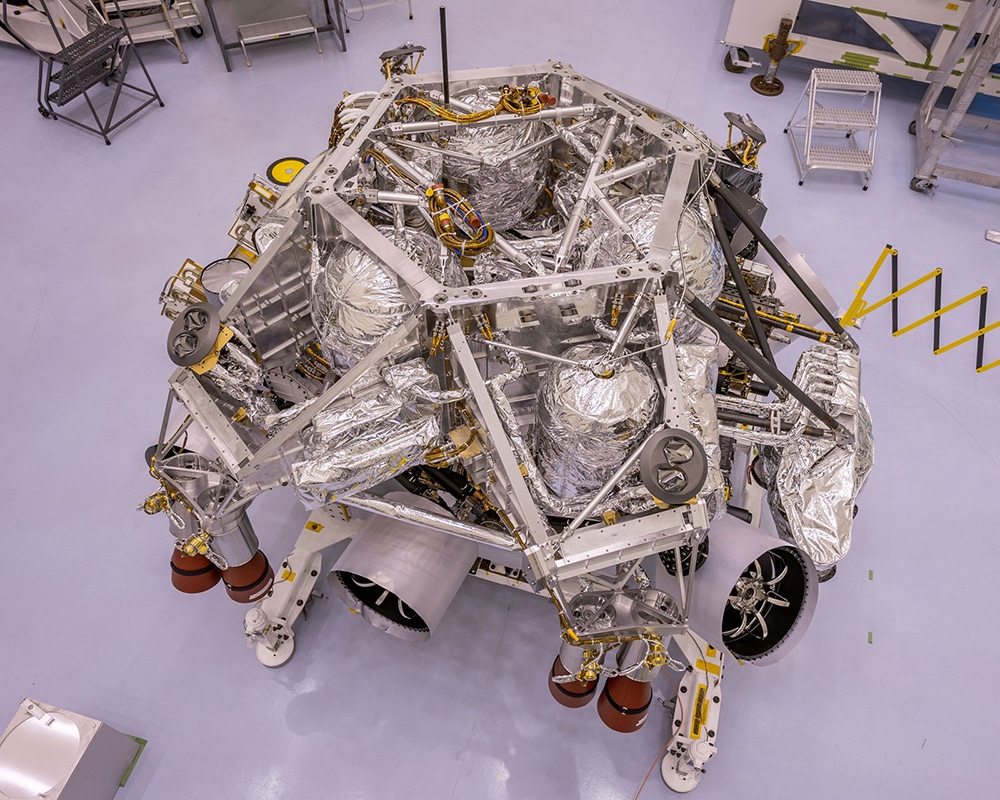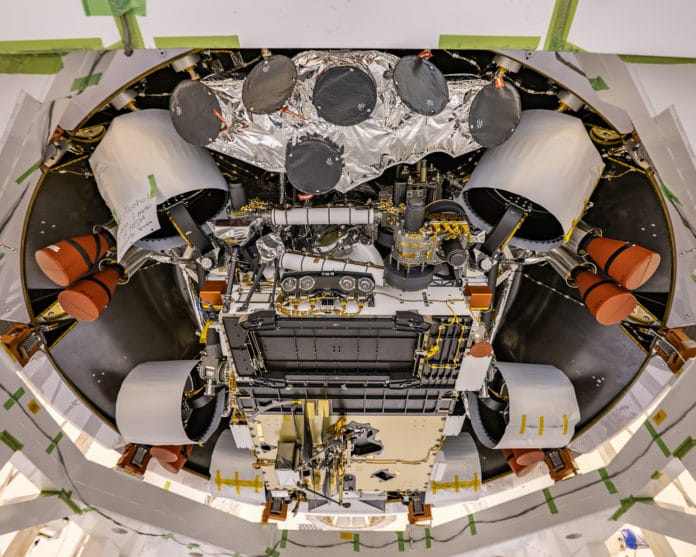While the European-Russian ExoMars mission has been postponed for another two years, the American rover Perseverance is almost ready to launch for the Red Planet this summer. Recently, NASA experts have informed that they have begun the “vehicle stacking” process on the Perseverance rover of the future Mars 2020 mission.
All work on the assembly of the rover itself has already been completed. Earlier, a parachute system and an unmanned aerial vehicle Mars Helicopter were installed on it. NASA hopes that it will be the first agency to bring a flying machine to an alien planet and successfully test it there.
It has combined the rover with the Sky Crane braking system and the rear shell of the landing module, which should gently lower the rover to Mars. The crane was attached to the Rover on April 23, and a week later, a protective box (aeroshell) was added. It contains parachutes and other necessary equipment, which will be used until the late stages of the descent. Its purpose will also be to protect the rover and its rocket crane in interplanetary space, especially when flying through the atmosphere of Mars.

When the rover enters the sparse atmosphere of Mars on February 18, 2021, the heat shield comes into play first. After sufficient deceleration, the parachutes are activated, which ensures a further reduction in speed. In the final phase, the descent stage is separated from the rear aerodynamic cover, and motorized reduces the rate of descent to less than 3 km/h.
As the system with the rover is 20 meters above the surface of Mars, flight-separation bolts will be released by small pyrotechnic charges. Nylon cords then spool out through what are called bridle exit guides to lower the rover. As soon as the rover wheels upon the ground, the cables will be broken, and the system will fly off to a safe distance.
The Perseverance rover, comparable in size to the Curiosity rover, carries onboard seven different scientific instruments created as part of the Mars Exploration Program. During its astrobiological mission, the rover will search for traces of ancient life, helping to understand the evolution of the climate on Mars and its geology. It will also take samples that will be transported to Earth in a few years on another mission.
